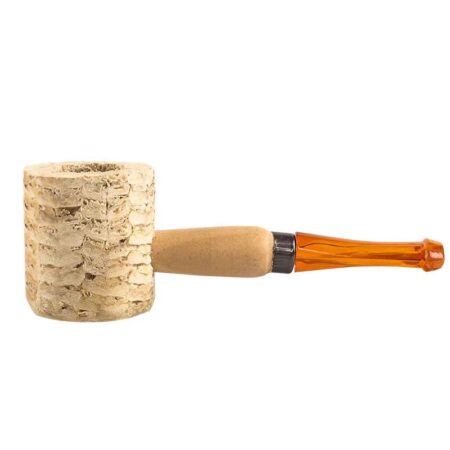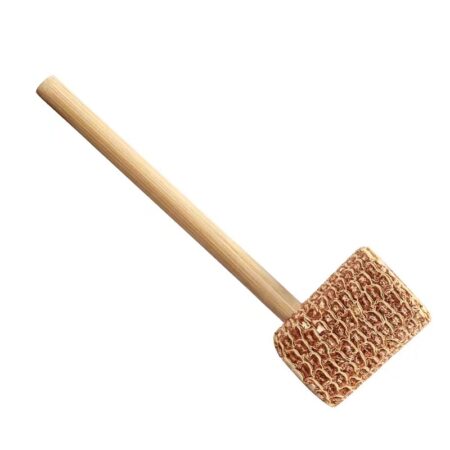Now that you have some corn cobs, do you want to try making your own corn cobs pipe? Well, get out your tools and corn cobs and get ready to get started. In this blog, I’ll walk you through the entire process from drilling to applying a coat of varnish to the pipes, and more tips from the making process and (error I’ve made😂).
I hope I can help you by sharing my experience of making a corncob pipe, and if you can please take some photos of your finished pipe and leave them in the blog comments when you’re done – I’m so excited to see you making a successful corncob pipe. This makes me feel very accomplished!
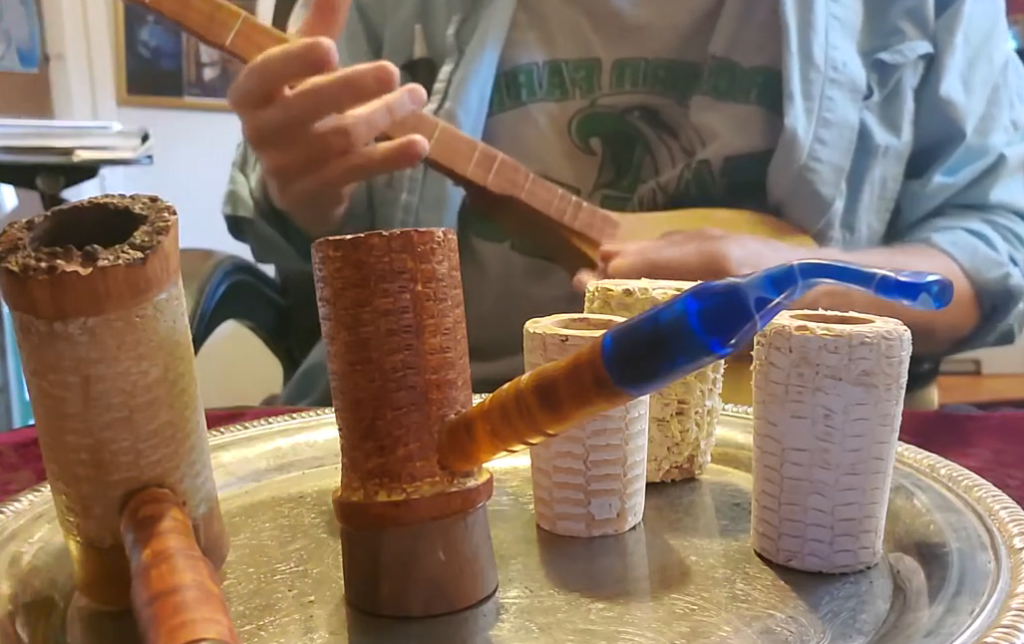
What kind of corn should be used for making a corn cob pipe?
Well, when picking corn cobs for your homemade pipe, I would choose Cajun corn cobs. But please note that we also need to Stay away from sweet corn – those cobs are too thin and will burn right through.
And the cobs we use to make our pipes must be 2 inches wide. You need a good amount of surface area to carve out the bowl and airway properly. The cobs should be fully dried out too. This helps stop mold or bacteria from growing, plus it gives the cob a lightweight feel so it gives you a smooth smoking experience when you use it
Now I know some pipe makers like to use special hybrid corn that’s grown just for pipes. Like the Missouri Meerschaum pipes use a hybrid bred back in 1946 with the University of Missouri and some Dr. Marcus S. Zuber. This hybrid corn grows longer, bigger, and sturdier than regular corn, with super high fiber content. It needs special saws to even cut it!
After harvest, the vigorous cobs get the seeds removed and are air-dried day and night for two years until they reach almost the density of briar wood. That’s a key hardening process. Only then can they be formed into different sizes, with each average diameter making two standard pipe sizes. So pipe makers really care about the pipe corn source and genetics. But we may not get the material to make it, so when making corn cob pipes I will use Indian corn cobs.
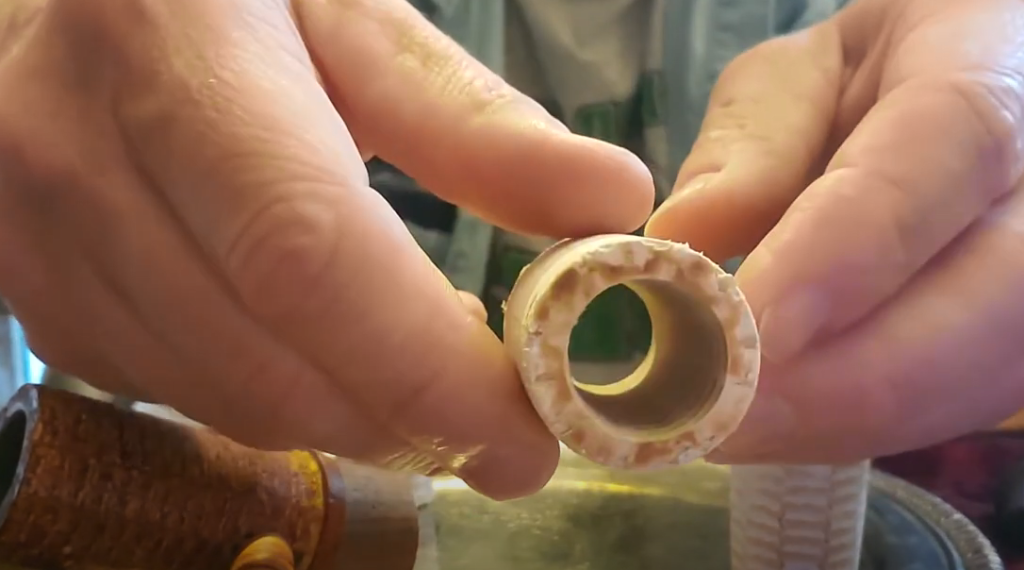
How do you hollow out the corn cob when making a corn cob pipe?
Hollowing out the bowl is one of the trickiest steps when you make your own corn cob pipe. You need to create a smooth, even chamber for the tobacco. I find using a 5/8 inch wood drill bit chucked into a power drill makes quick work of this. Slowly bore into the center of the cob, being careful not to puncture through the sides. Gradually widen the chamber by angling the drill bit and working your way around. Take your time and don’t rush this step. You can further refine the shape and smoothness using a round rasp by hand. Remove any loose shreds and gently sand the inside of the bowl.
You can tweak the airway size to your desired draw. I like to go a bit wider than most corn cob pipes – around 5/8 inches or so. After drilling, gently smooth out the inside of the airway with a round rasp or file. Check the draft by blowing through it.
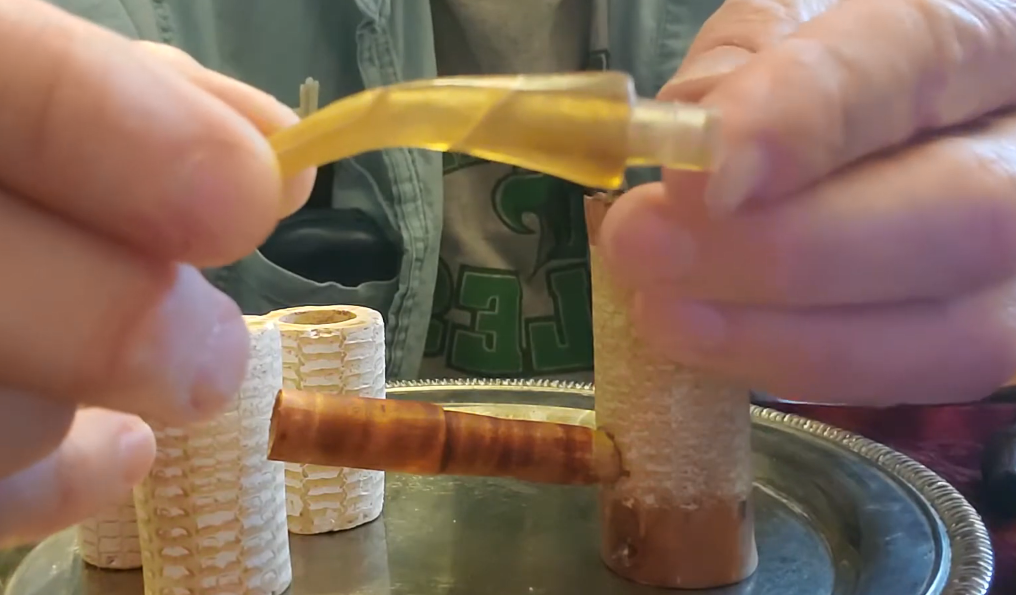
How do you ensure a tight fit between the stem and corn cob?
After the production is completed, I need to ensure that the pipe stem and corn cob can be installed tightly together.
Start by wrapping a small piece of fine sandpaper around a thin dowel rod. Use this to gently polish the inside of the stem hole until it’s nice and smooth. Then, gently twist your stem (I like vulcanite or acrylic) into the cob, but During this process, we must be very careful not to damage the corn cobs with too much force.
During the installation of the valve stem, we need to feel whether the installation is successful and gradually enlarge the hole as needed. If during installation you find that the pipe stem and the corncob are not tightly attached and there is air leakage, just apply a little wood glue into the hole. OK, now a delicate corn cob pipe is finished.



